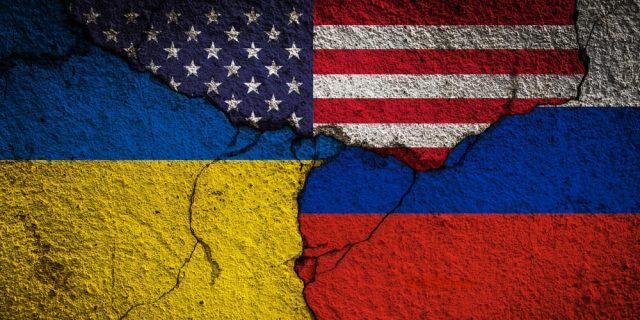
If we think back to the climate of 28 February at the White House and to the scene of the meeting-clash between US President Donald Trump and his Ukrainian counterpart Volodymyr Zelensky, what we are witnessing these days is an entirely new and renewed scenario. We have gone through several phases. From the open clash between the two leaders, to Ukraine’s attempts to mend fences, passing through the uncertainty of the Russian positions and the tycoon’s annoyance at the impossibility of predicting (at least in the short term) Moscow’s moves. And along all that, the iconography of this historical conjuncture will surely be remembered as the ‘Vatican dialogue’. Two simple chairs in a setting as stunning as it is surreal to frame a dense dialogue between two leaders committed to finding an agreement to set Ukraine on the path to a just and acceptable peace. Until the signing, in recent days, of the rare earths treaty: an agreement that should have been signed as early as the end of February but, evidently, the time had not been yet ripe.
THE AGREEMENT BETWEEN KIEV AND WASHINGTON
Taking a look at this agreement – still to be approved by the Kiev parliament – let us start from what the White House formally expressed. The official documents, in fact, speak of an economic partnership that will make it possible for the two countries to collaborate and invest, so that Ukraine’s economic recovery can accelerate. All this while emphasising that as of today, the Trump presidency is committed to a peace process that aims to achieve a free and sovereign Ukraine, as well as a prosperous one. This is a much more advanced position than the tycoon’s earlier stances, which instead saw Zelensky forced to sit at the negotiating table on the losing side.
A LOOK AT RECONSTRUCTION
What we continue to refer to as the ‘rare earths treaty’ for convenience, in reality deals with a much broader range of aspects that look ahead to what will be the future reconstruction mechanisms of the conflict-torn country, in addition to oil and natural gas. The investment fund that will be set up, in fact, aims at joint and equal management, but above all eliminates any debt obligation on the Ukrainian side. The reference is related to the tycoon’s previous demands to the Ukrainian premier to return the aid (there is talk of $350 billion, but the figure is disputed) provided during the conflict. In addition to these reassurances, which weigh heavily on the security of the country’s economic future, it is important to emphasise that according to the drafts leaked to the press, Ukraine should retain full control over its subsoil and infrastructure, as well as its natural resources.
A TOUGHER STANCE TOWARDS MOSCOW
Compared to Donald Trump’s initial approach, which struggled to even point out which side the hostilities started from, the situation seems to have changed considerably in favour of Kiev. Meanwhile, the text of the treaty would refer to a large-scale invasion by Russia. An important stance, therefore, which goes hand in hand with the assumption that neither states nor individuals who have in any way financed Moscow’s involvement in this conflict will ever benefit in any way from the reconstruction of Ukraine. An important position which thus seems to draw a line, this time shared by the US Administration as well.
THE ROLE OF EUROPE
For Kiev, there would also be no dangers with regard to its willingness to join the European Union. Criticism had in fact been feared regarding the preferential nature of the US trading partner. A relationship that could, however, conflict in the future with the provisions and treaties signed by the member states. But the US does not seem to want to affect this or Kiev’s accession process, a fact that seems to be recognised in the text by the US itself. It would also be recognised that it is important that this treaty does not in any way conflict with this process, so that should Kiev need to revise some of the terms of what it has signed (e.g. to meet the obligations of EU membership), new negotiations could be opened.
THE NEXT STEPS
Of course, the text has to go through the Ukrainian parliament and will certainly not be enough to get the parties to sit down at the negotiating table. But at least it seems to have redrawn a geometry that, until a few days ago, seemed extremely more unbalanced towards the East.



 Subscribe
Subscribe